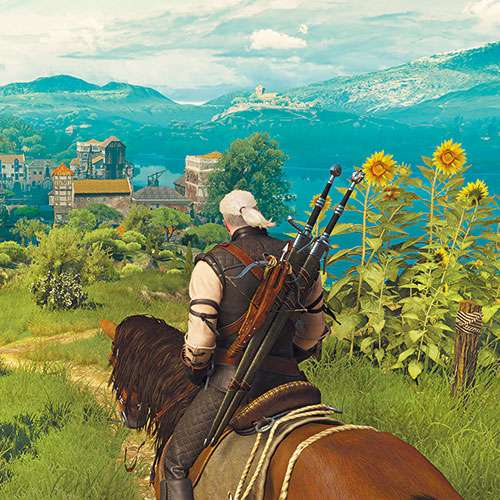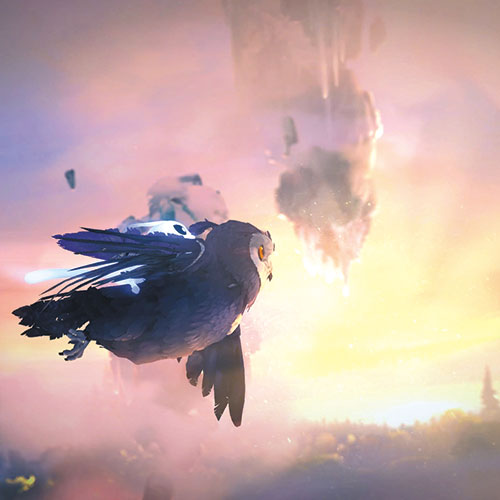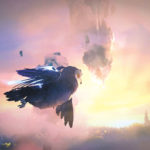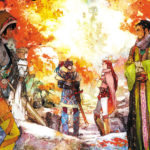Game Review: ‘Witcher 3’ the land of love and wine flows with blood

By Josh Hawkins | Game Informer Magazine (TNS)
“The Witcher” series is one of my all-time favorite video game trilogies, and it was with great sadness that I went into “Blood and Wine.” I wasn’t sad because I thought the expansion would be terrible, quite the opposite in fact, I was sad because this means we’ve come to the end of Geralt’s storyline. Though he may be a brutal, emotionless, monster slaying machine, he’s also one of the most interesting characters I’ve ever had the pleasure of playing as in a video game. Thankfully, CD Projekt Red has not disappointed, and Geralt’s final adventure is one of his most intriguing and exciting yet.
I was also very fond of “The Witcher 3: Wild Hunt,” and the expansion, “Hearts of Stone.”
A WHOLE NEW WORLD
The story begins like any, it’s another day in the war-torn Northern Realms, and Geralt’s out looking for work. The notice boards have never let him down before, so we ride into a village and check out the notice pinned to the board. One happens to catch his eye, so he scoops it up, and heads to meet up with the men who left it behind. What follows is a quick reminder of just how brutal the Northern Realms can be. It’s a good way to introduce the upcoming story, because it helps to remind players of where they’re coming from, which makes Toussaint’s reveal that much more intriguing. It isn’t long before Geralt and his old friends are headed off to the land of love and wine.
Toussaint is more than just another addition to the base game’s world. The people there, the land surrounding their cities, and even the dialogue used is vastly different from the rough and broken dialogue of the Northern Realms. Honor, valor, compassion, and virtue are important in this new land, and that’s painfully clear from Geralt’s first encounter in the land. After a brief fight with a monster, Geralt gets straight to work. A beast has been killing in the land, and its newest victim has just been found on the bank of a nearby river.
It doesn’t take long to get back into the swing of things. Geralt’s Witcher Sense is still an essential tool that you’ll be making use of quite a lot, and it works as well as could be expected. Alongside the main questline, there are plenty of optional quests to complete, including several new Scavenger Hunts which feature some new Witcher armor pieces. Many of the quests are interesting, and intriguing, spilling out their own little stories as they did in the base game and Hearts of Stone expansion.
I was once tasked with exploring an old mansion, which was said to be haunted. During my investigation of the area, I learned that a rare Spotted Wight had taken up residence within the old house. My goal, to acquire some of the Wight’s spittle, was clear, however, I was also given a chance to break the curse that afflicted the poor creature. Decided to follow my heart, I tried to cure the beast. I failed the first time around, but after a brief bout with a bug that somehow kept my choices from displaying, I was finally able to cure the creature, proving to myself that all Witchers aren’t just heartless monster killers. It was a huge win for my vision of Geralt, and I felt like it really helped to prove how deep the meaning of your choices affect the world around you.
A DARING NEW ENEMY
One of “Blood and Wine’s” biggest draw-ins is the addition of over twenty new enemies to face off against. Many of these enemies are just new types of old enemies, however, they offer new challenges for the Witcher to face. Their designs are interesting, and while I often found myself struggling to take on some of the new enemies, it wasn’t that hard to take them down after a few tries. The main questline’s enemy is also very intriguing, and all throughout the experience I found myself wishing I could learn more about the beast that I had been sent to destroy.
Of course, like any good “Witcher” tale, choice is a vital part of the story, and your own choices can often determine who and what become your enemies. This is still the case in “Blood and Wine,” and I often found myself having to think for several moments before coming to a decision on some of the things that I was faced with. It’s a feeling that I haven’t experienced with many other games, and I believe it’s a vital part of what makes the “Witcher” series feel so alive.
‘THE WITCHER’ REDESIGNED
Another big part of this expansion is the newly designed user interface. CD Projekt Red have completely redesigned the game’s inventory system, making it much easier to use and explore. Items are now broken up by categories, and the equipment section is more clearly defined than it was in previous versions of the game. It’s something that many felt the game sorely needed, I was one such person, and it’s great to see so much love put into the game’s systems so long after release.
Armor dyes have also made their way into this new world, as colorful attire is a big component of the Toussaint lifestyle. These dyes can only be used on “Witcher” gear, however, which means those of you who enjoy wearing the frillier attire used by Non-Payer Characters, might find yourselves a bit disappointed in the system. Like anything, dyes can be purchased or crafted, but you’re going to need to find the diagrams and recipes before you can create them yourself. It’s a nice new addition that really helps you personalize the Witcher gear that you find throughout the world, and it works easily enough without being overly complicated.
Another important addition to the game is the expanded New Game+ level, which now has a maximum level of 100. This gives players plenty of room to continue improving their character, as they’re sure to want to do with the additional Mutations which have been added to Geralt’s Mutagens. There are twelve new Mutations in all, which can be fully explored through the game’s New Game+ mode. They aren’t mandatory to complete the main questline, however they do add game-changing abilities that can help you turn the tide of battle with a simple sign cast.
For those who enjoy spending hours upon hours wandering through the land’s Inns and playing others in Gwent, a new special Skellige deck has been added. It’s a nice addition to an already massive time sink, and it was pretty cool having some new cards to search for, even if I don’t play the card game that often myself.
A FITTING FINALE
One of my favorite things about “Blood and Wine” is the main storyline’s ending. After you’ve completed the story, CD Project Red brings everything to a close. This means your decisions throughout the base game’s main storyline is important, and it plays into one of the moments you come across as you finish up the final bit of the expansion’s main quest. It’s a nice touch to really help things feel connected, and to further hit home the impact that your choices have on the game world as a whole.
Overall “Blood and Wine” is an excellent addition to the “Witcher 3” universe. The new enemies, redesigned UI, and exceptionally well-crafted new land to explore are all pluses in my book. The main questline introduced for the expansion is intriguing, and gives much more insight into the world that Geralt has spent his life adventuring through. In the final moments CDPR brings everything together to really help the player’s impact on the world feel more real, and it’s something that very few developers have ever managed to really accomplish.
There wasn’t much I didn’t like about this new land, and while I did experience a few issues — I once crashed several times during a major cutscene, which forced me to watch the first half of the scene multiple times — overall the experience was fairly bug free. The world of Toussaint is a pleasure to explore, and it’s plenty big enough to keep you coming back for more of the “Witcher” series for days to come. All in all, it is the best ending we could have hoped for a character as interesting and well-crafted as Geralt of Rivia.
ESRB: M
Platform: Playstation 4











